This article explains how to set up a kiosk on Windows 11.
Windows allows users to set up a kiosk system as a public terminal or to display public announcements or other information.
A single-app kiosk uses the Assigned Access feature to run a single app above the lock screen. When the kiosk account signs in, the app is launched automatically, and the person using the Kiosk cannot do anything on the device outside of the kiosk app.
To set up a kiosk in Windows, User Account Control (UAC) must be turned on to enable kiosk mode. Also, the kiosk account or user must sign in on the physical device, as a remote desktop is not allowed.
The kiosk account must also be a limited or standard user account, not an administrator.
Below, we’ll show you how to configure a Windows 11 machine as a kiosk.
How to turn on kiosk mode in Windows 11
As mentioned above, Windows allows users to set up a kiosk system as a public terminal or to display public announcements or other information.
When you set up a kiosk (also known as assigned access) in Settings for Windows clients, you create the kiosk user account simultaneously or use an existing account.
To set up assigned access in PC settings:
Windows 11 has a centralized location for the majority of its settings. As a result, everything can be done, from system configurations to creating new users and updating Windows from its Settings app.
To get to System Settings, you can use the Windows key + I shortcut or click on Start ==> Settings, as shown in the image below:
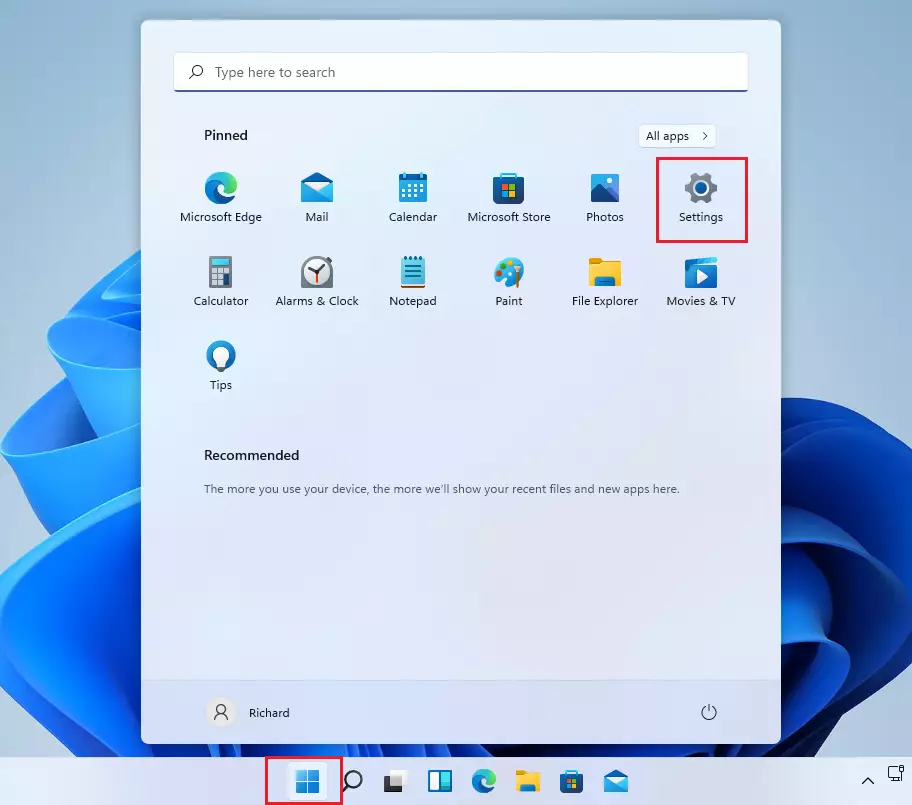
Alternatively, you can use the search box on the taskbar to search for Settings. Then select to open it.
The Windows Settings pane should look similar to the image below. Click Accounts> Family & other users tile in Windows Settings to expand it.
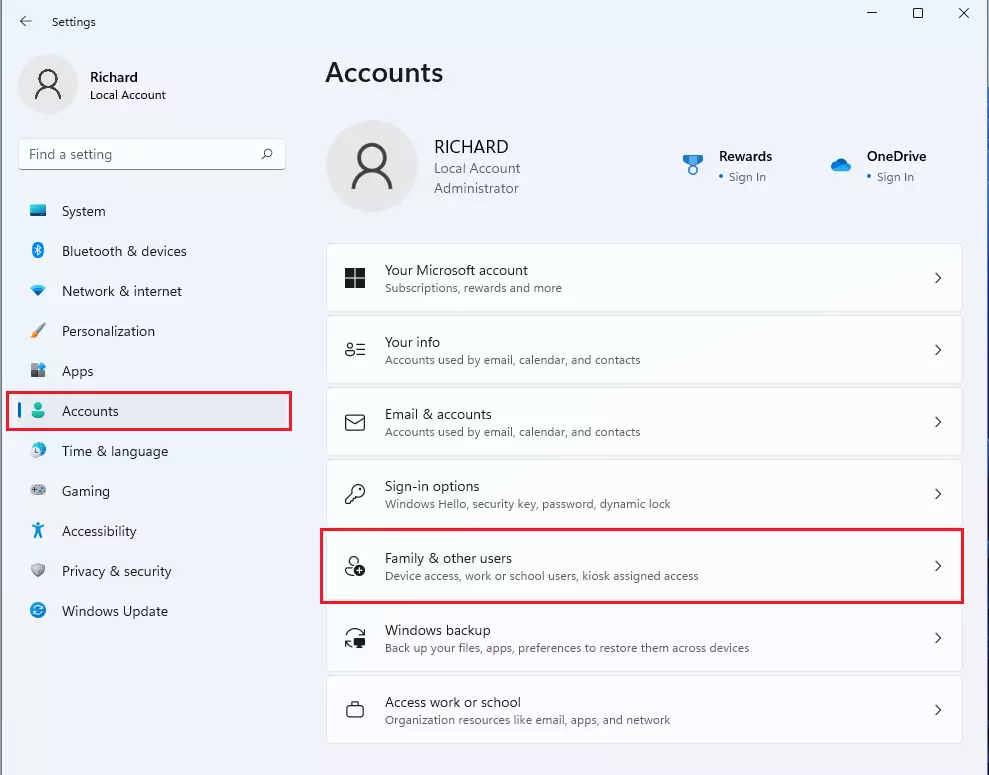
On the Family & other users settings pane, under Set up a kiosk, click the Get Started button to begin.
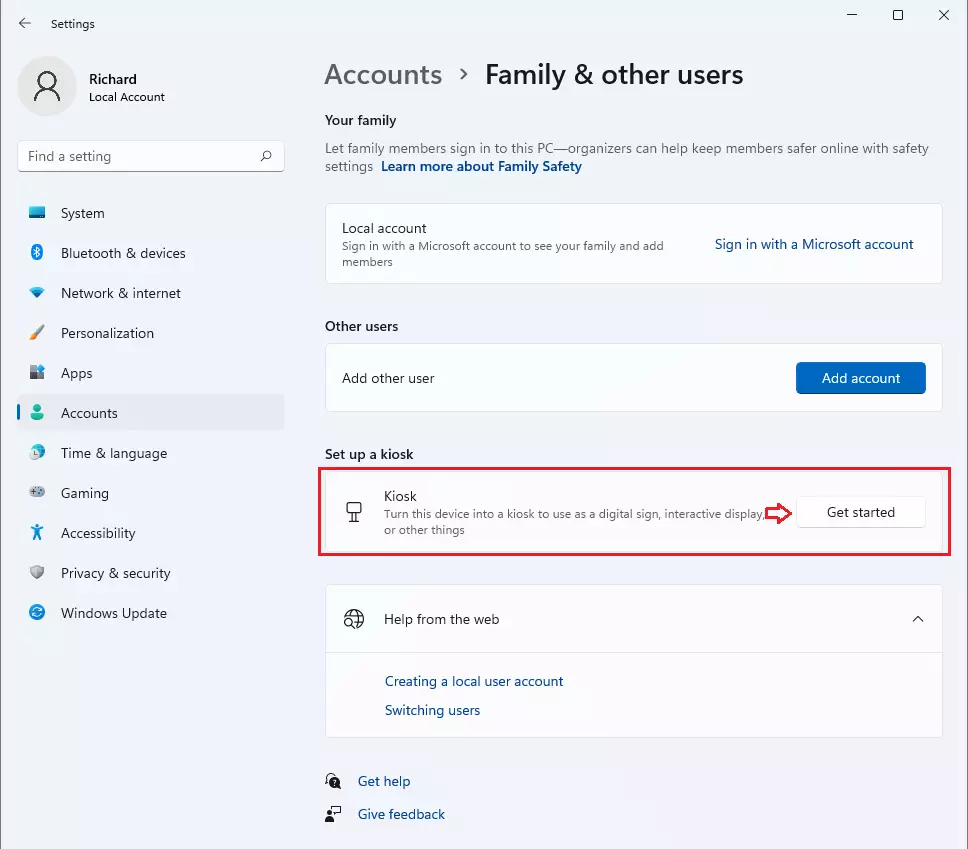
On the pop-up window, type in an account name. By default, Kiosk is used, then click Next.
If a standard user is already created, you can choose an existing user on the Create an account window below.
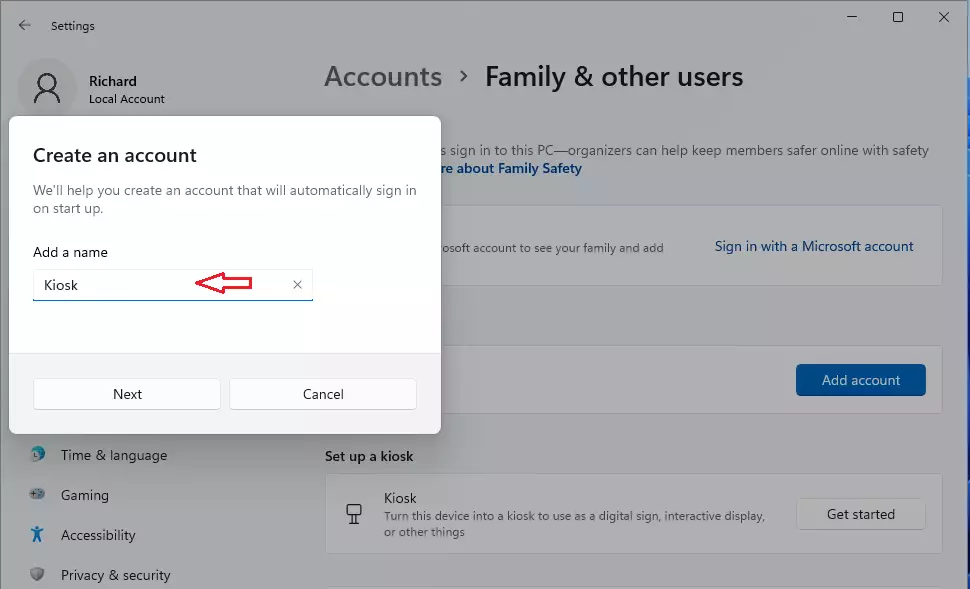
Choose an existing standard or limited account if you have already created a kiosk user.
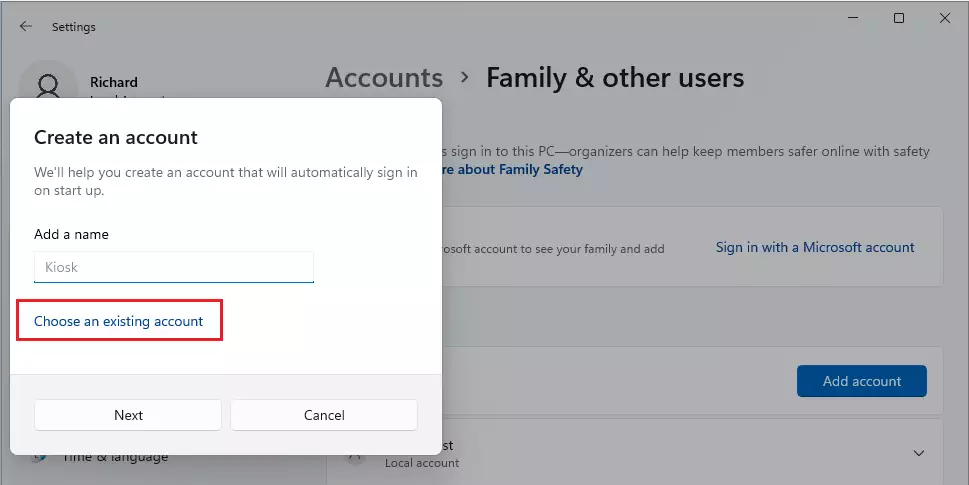
On the next window, choose an app you want to use in kiosk mode when Windows starts.

If you selected Microsoft Edge, then you’re given two options on how to use the app:
- As a digital sign or interactive display: Good to display information, the browser will open in full screen.
- As a public browser: Good for public browsers where users will use the browser in a public setting.
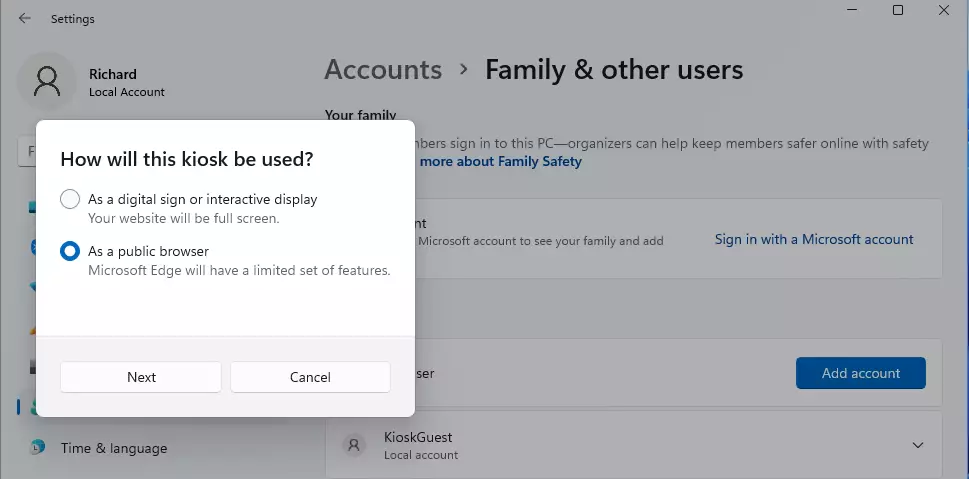
On the next screen, type in the default home page or start page when the browser opens.
The option is to restart the browser if someone has used it for a set time. This helps keep data safe in a public browsing session.
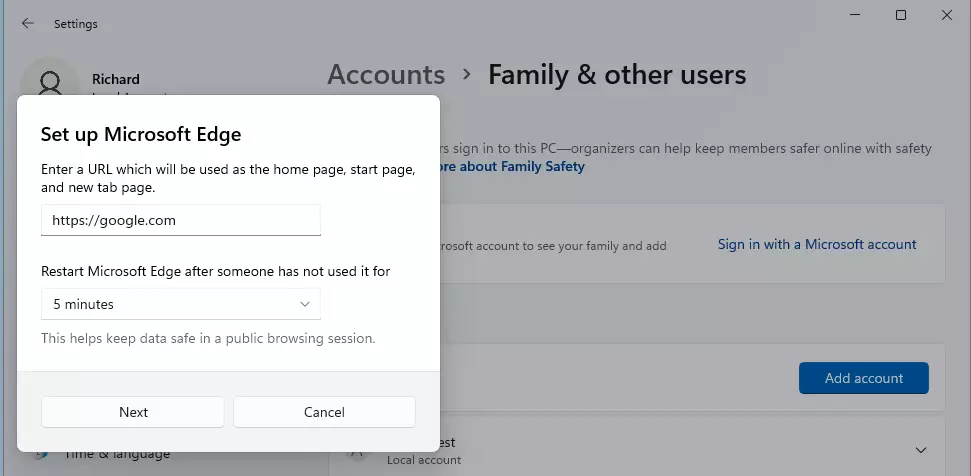
Click the Next button and complete the setup.
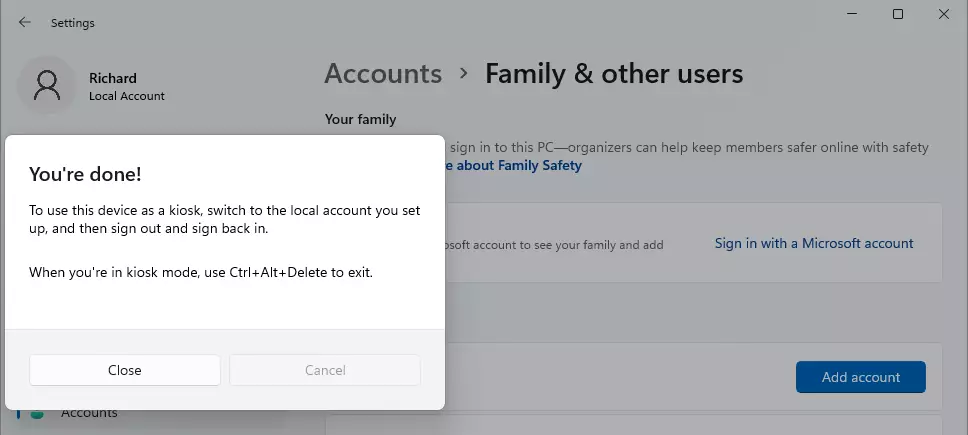
You are done. You can now close the Settings app. Finally, restart your computer to test.
Once the Kiosk user logs in, the Microsoft Edge browser will start up and automatically take over the display. Users cannot carry out any other function while logged in.
That should do it!
Conclusion:
- Setting up a kiosk on Windows 11 using the Assigned Access feature allows for a single-app kiosk above the lock screen, limiting user access to a specific application or browser.
- Navigate to the Settings app and expand the Accounts > Family & other users tile to set up a kiosk.
- Upon creating or selecting a kiosk account, choose the desired application to run in kiosk mode and customize settings such as the home page and restart options.
- After completing the setup, the kiosk user can log in, and the specified application will automatically launch and take over the display, preventing users from performing other actions.
- Restarting the computer after configuration is recommended to ensure proper functionality of the kiosk mode.

Leave a Reply